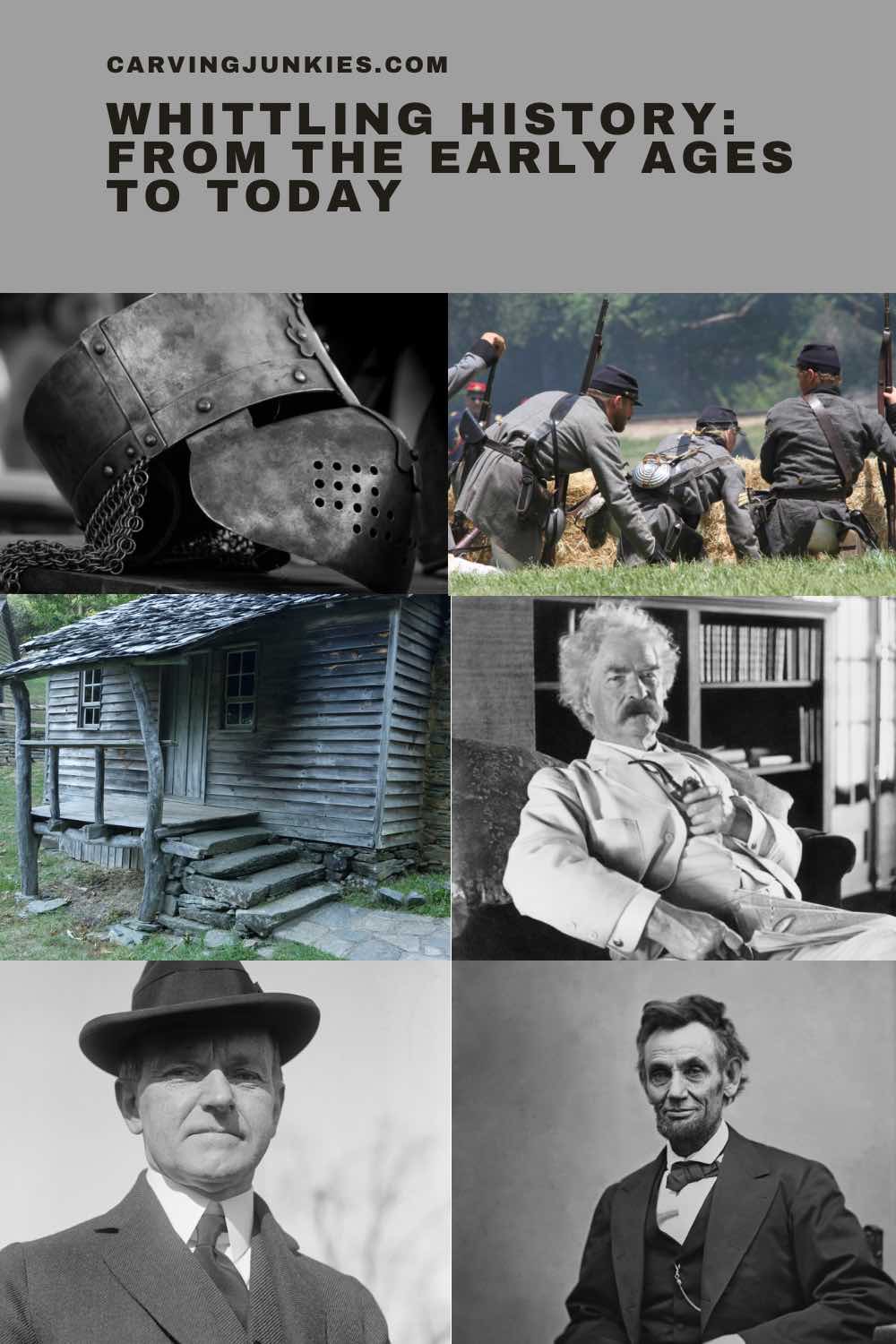- Home
- How to whittle wood
- Whittling history
Whittling history since the early ages
Including famous people who loved to whittle
This page about whittling history chronicles the age-old art of carving wood into decorative or functional objects—using primarily a knife.
From early times to the present day, people have used whittling to create everything under the sun, from eating utensils and hunting tools to fine works of art.
This page will explore the history of whittling—from its earliest origins to modern whittling of today.
Whittling history—the beginning
It may surprise you to know some believe the earliest recorded examples of wood carved objects may date back to the Stone Age. The oldest known whittled object is a small wooden bird figurine that was found in a German peat bog. It is estimated to be from 400BCE.
The early Egyptians and Greeks were also whittlers, and created everyday items such as hair combs and spoons.
Whittling history from the Middle Ages
During the Middle Ages, whittling became more widespread as woodworking tools became more advanced—and more readily available.
In Europe, skilled woodcarvers were highly sought after, and their wood carved creations adorned churches, castles, and the stately homes of the wealthy.
However, whittling was not just limited to the upper echelons of society. Many people in rural areas whittled as a way to pass the time, and the tradition was passed down among family members, from generation to generation.
In America, whittling became popular during the colonial era. Early American settlers would carve wooden toys for their children—and create practical items they needed for household chores—including butter paddles and clothespins.
Whittling history in the 19th century
Whittling became very popular during the 19th century in America. In the south, people would often whittle while sitting on their front porches or before a roaring campfire. They created diverse creations ranging from simple toys to intricate works of art. Whittling also became popular among sailors, who engaged in whittling to pass the time during long voyages at sea.
The rising popularity of whittling was due—in part—to the more widespread availability of inexpensive pocket knives—and an abundance of trees in rural areas. Whittling was also viewed as an enjoyable activity to pass the time—or to relax with friends and family.
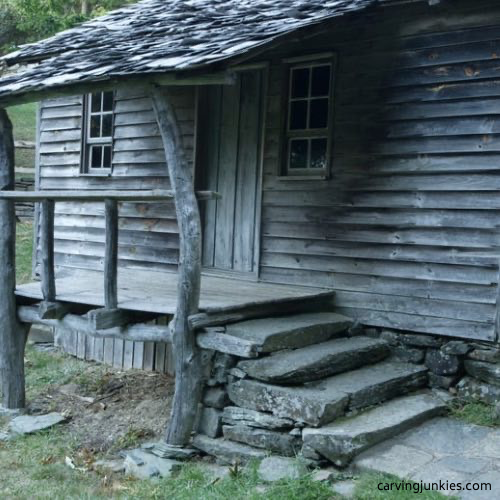 Whittlers often sat upon their porches
Whittlers often sat upon their porches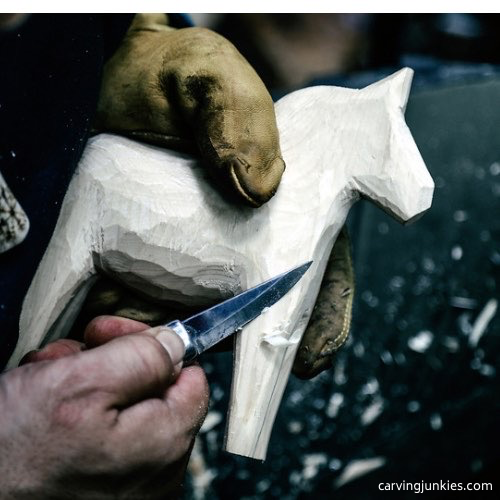 Whittling a toy
Whittling a toyWhittling history in America
From the years 1865 to 1965, whittling took off in America. It has been said that civil war soldiers passed the time between battles by whittling little figures, walking sticks, and eating utensils.
Once these soldiers returned home, they brought whittling to rural areas, as did migrant workers. These migrants were sometimes known as hobos, and would barter their crafted whittles in exchange for food.
About halfway through the 20th Century, the formation of the Boy Scouts organization helped increase awareness of whittling. However, whittling generally declined in popularity as industrialization made it easier, faster, and cheaper to mass-produce wooden items.
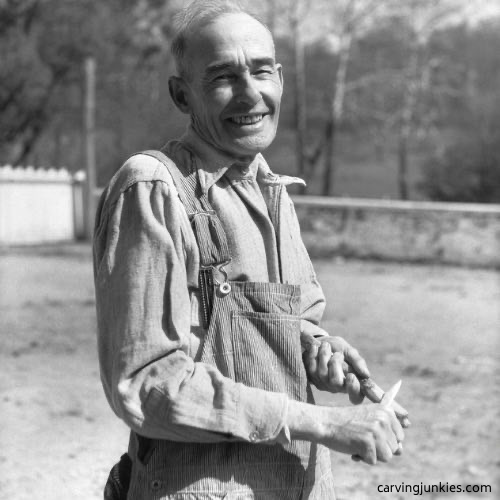 Old-time whittler
Old-time whittlerWhittling history: On the rise now?
Whittling seems to have experienced a resurgence in the 21st century as more people became interested in trying traditional crafts and hobbies.
I have noticed that whittling seems to have gained popularity during—and following—the Covid-19 pandemic. The art of whittling is also evolving from simplistic designs to more intricate creations and techniques.
Both seasoned—and novice—whittlers can enjoy the relaxing (and meditative) benefits of working with their hands. There is nothing more rewarding than using your imagination to create something from a simple block of wood.
As more people are bitten by the whittling bug, the art form is sure to continue to grow and change over the next 100 years.
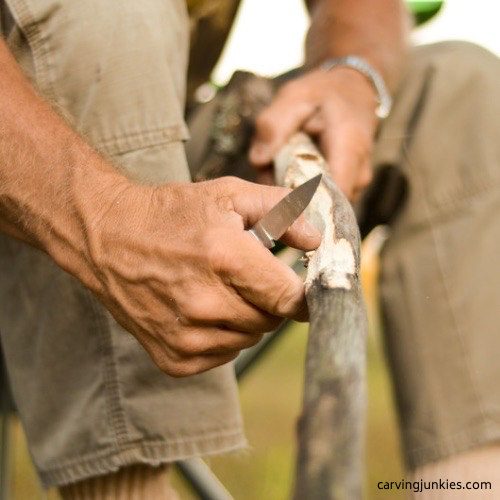 Whittling a stick
Whittling a stick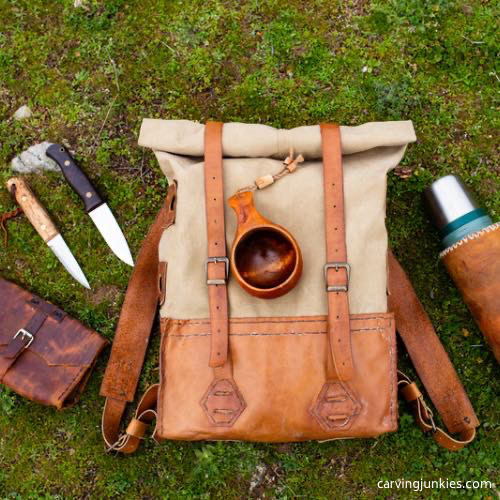 Easy to pack your knife and wood
Easy to pack your knife and woodWhittling history: Notable whittlers
Over the years, many people have become notable for their whittling skills, and some of their works have become highly sought after. The list below shows us that whittling has been a treasured pastime for people from all walks of life—from political leaders to book authors—and outdoor enthusiasts, including:
- Mark Twain, the renowned American author, was said to be a good whittler. He wrote about the Barlow knife—that was worth about 12.5 cents in his day—in one his best known books, “Tom Sawyer.”
- Abraham Lincoln—the sixteenth President of the United States—was known for whittling, too. He liked to pass his down time by whittling small figures, and was said to be talented at carving snakes.
- Calvin Coolidge—America‘s 30th President—was also a whittler
- Ernest Warther—hailed as the "World's Master Carver”— was a prolific whittler who craved intricate trains, steam engines, and other objects.
- Wilhelm Schimmel—a German-born whittler who emigrated to the United States in the late 19th century—is well-known for his intricate carvings of animals, people, and objects.
- John Muir—the Scottish-American naturalist and conservationist—would often whittle small objects while on his wilderness trips.
- Alexander Calder—the renowned sculptor who is known for his distinctive mobiles and large-scale outdoor sculptures—apparently enjoyed whittling as a fun hobby, and created small, whimsical figures.
Check out our fun, step-by-step whittling and woodcarving tutorials!
Want to learn more about whittling?
Check out our free guide about how to whittle wood to learn about the difference between whittling and wood carving, and the tools you will need to get started.
Ready to give whittling a go?
Check out our fun, step-by-step whittling tutorials that feature progress photos from all angles including:
Some of our many wood carving tutorials can also be easily adapted to whittling with only a knife, including:
- Fortune cookie tutorial
- Alligator carving tutorial
- Big-haired troll carving tutorial
- Old man wood carving tutorial
- Mushroom carving tutorial
- Carve a little man tutorial
Whittling history summary
- Whittling has a rich and varied history, with its roots stretching back many centuries.
- From early beginnings, as an enjoyable way to pass the time, whittling has evolved into an important and creative art form.
- The precise history of whittling is difficult to track because it is a folk art that has not been extensively documented.
- Whether you're just starting to whittle—or are a seasoned whittler—there are always new tips and tricks to learn about this wonderful, creative past time.
Sources:
- About the Barlow Knife. Accessed April 16, 2023. https://knife-depot.com/pages/about-the-barlow-knife..
- Braak Bog Figures. Accessed April 16, 2023. https://en.wikipedia.org/wiki/Braak_Bog_Figures.
- Ernest Warther Museum. Accessed April 16, 2023. https://thewarthermuseum.com/meet-our-family.
- History of hair combs. Accessed April 16, 2023. https://www.neemwoodcomb.in/buy-hair-combs-online/history-hair-comb.php
- Tangerman EJ. Whittling and Woodcarving. Dover Woodworking, 1962.
- Whittling Away. Accessed April 16, 2023. https://www.thelaurelmagazine.com/history-in-highlands-nc-and-cashiers-nc/whittling-away.
Get 50 Wood Carving & Painting Tips when you join our FREE Covered in Chips club.
Share this page
carvingjunkies.com never sells your personal information.
This site uses cookies for its operation and to enhance your experience. As an Amazon Associate and Focuser Carving affiliate we earn from qualifying purchases.
Home | About Us | Privacy Policy | Terms of Use | Contact | Sitemap
